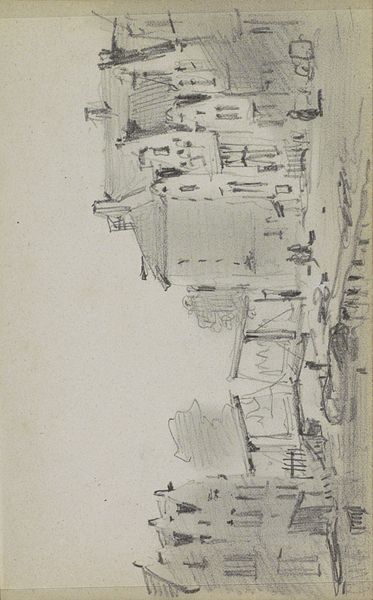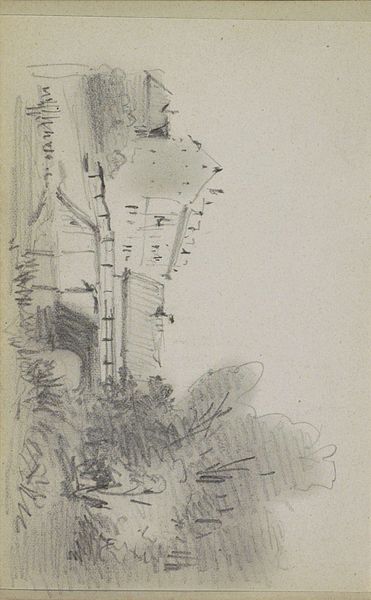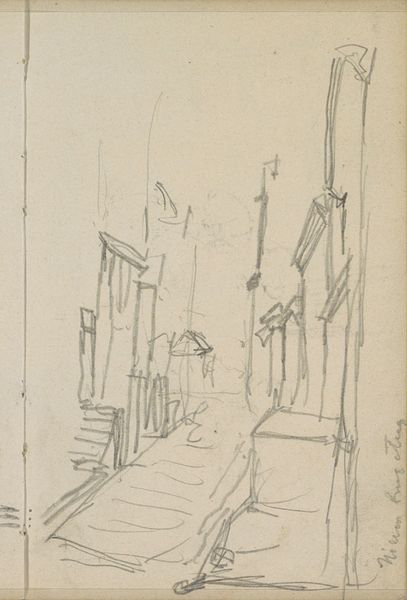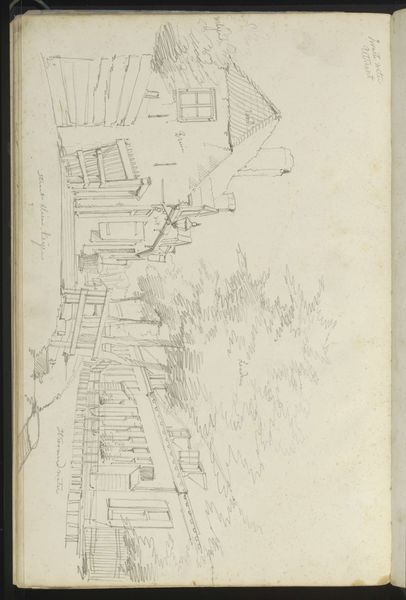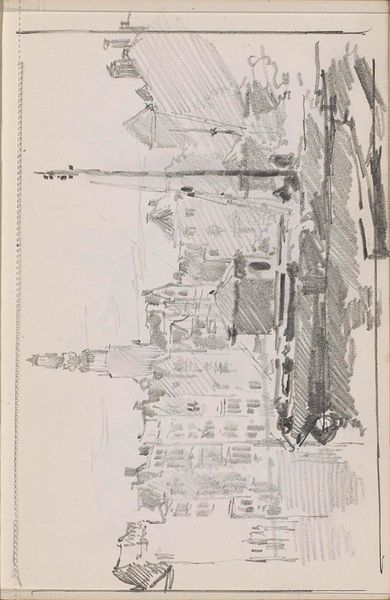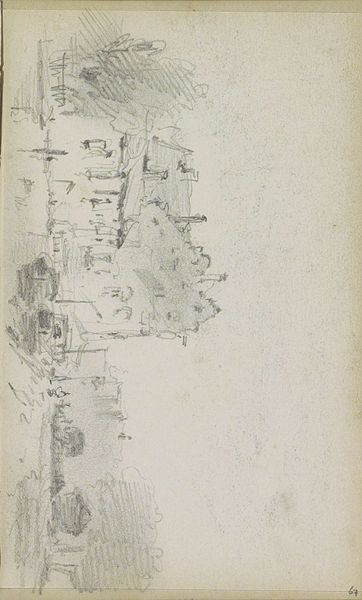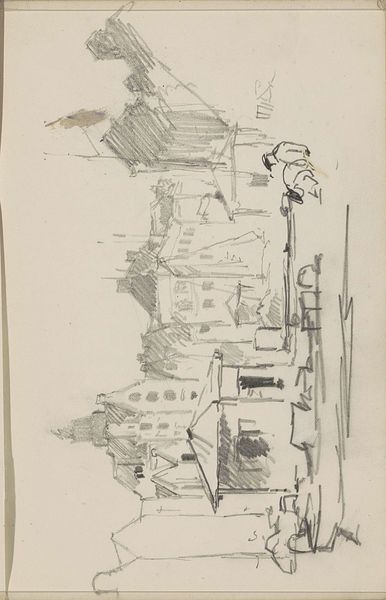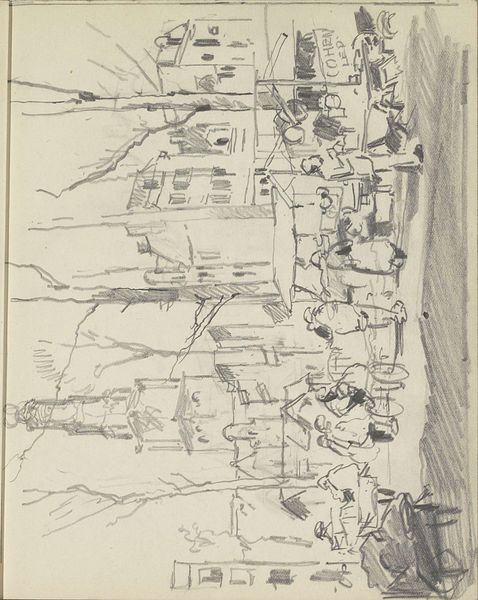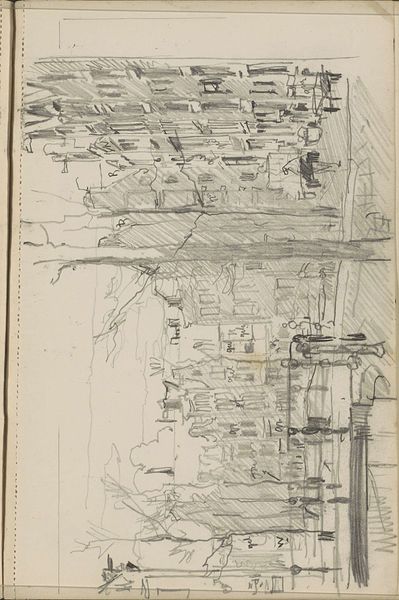
drawing, paper, pencil, architecture
#
drawing
#
impressionism
#
etching
#
paper
#
pencil
#
architectural drawing
#
cityscape
#
street
#
architecture
Copyright: Rijks Museum: Open Domain
Curator: Here we have Adrianus Eversen's "Gezicht op een straat in Oudewater," likely created sometime between 1828 and 1897. It’s rendered in pencil, ink, and perhaps a bit of wash on paper. Editor: It's unassuming at first glance—almost like a quick sketch. I'm struck by the bare materiality and the sparseness of the lines. What do you make of it? Curator: Eversen specialized in townscapes, and Oudewater itself carried historical weight as a site of resistance during the Eighty Years' War. This sketch offers us more than just architecture. It hints at the spirit of the Dutch Republic and their resistance. Editor: I appreciate that the etching seems to emphasize the craftsmanship that must have gone into constructing such a structure. I see wood, I see the brick, but this has such a muted palette, drawing attention to the buildings and emphasizing that they're made from a confluence of elements. Curator: I find that intriguing given how deliberately Eversen situated his townscapes within a marketplace. His townscapes were largely commissioned and collected by middle-class patrons interested in picturesque imagery. What does this say of the commercial interests underlying Dutch society at this moment in time? Editor: Well, it makes me think about how accessible such renderings made architecture; rather than being imposing edifices of authority, rendered so intimately, the materials become so clear that buildings become fundamentally tangible. But how do you think this piece participates within a larger conversation? Curator: Its simplicity stands in contrast to the idealized landscapes, of the Romantic era, yet this artwork does reveal details concerning urbanization, class dynamics, and public perceptions. Editor: Yes. It presents architectural materials themselves as the subject. This wasn’t a fancy oil painting designed to glorify power; it seems meant to bring one closer to materials available, and those things, perhaps even skills, attainable by more of its contemporary public. Curator: A fascinating point. The social and economic shifts reflected in such modest artistic output invite us to look critically at everyday surroundings. Editor: Exactly. And by exploring its production, we see a dialogue between materials, makers, and consumers—all grounded in time and place. Thanks for sharing that.
Comments
No comments
Be the first to comment and join the conversation on the ultimate creative platform.

